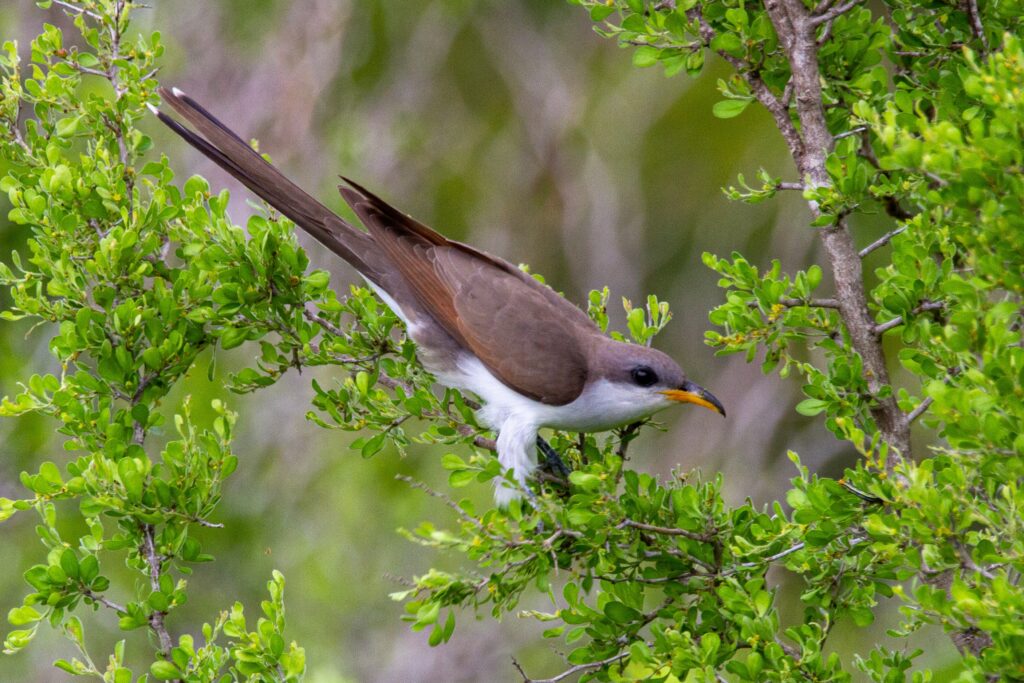By Laura Warman, Grants Manager

“Oh the cuckoo, she’s a pretty bird. She warbles as she flies.
She never says cuckoo, ‘till the fourth day of July”.
Cuckoos and their calls are the subject of a surprising number of songs, poems and stories, and they feature heavily in different mythologies (from ancient Greece to the Himalayas). Much like birds, many songs have migrated across the planet and slowly evolved into new songs that reflect new environments.
When you hear “cuckoo”, you might think of birds in clocks calling out onomatopoeically, or think of a parasitic bird that lays its eggs in another birds’ nest, but both of these traits mainly refer to a single Eurasian species- the Common Cuckoo (Cuculus canorus) that doesn’t live in the Americas (although they stray to Alaska on occasion). This one species has an impressive range that goes from the aridly cold Siberian steppes, to steamy forests in India and Southeast Asia, and they can migrate from the northernmost tips of Scandinavia to winter on South African beaches. But, it turns out it’s only the males that call “COO-koo”. Researchers have found that female Common Cuckoos imitate predatory bird calls to scare other birds off their nests, which gives the cuckoos time to lay their eggs. Tricking other birds into raising your young (also known as brood parasitism) is not restricted to cuckoos, in fact, most species of cuckoos don’t do it at all, while other unrelated birds—like the Brown-headed Cowbird (Molothrus ater) are prolific nest parasites.
Cuckoos belong to the Cuculidae family- a global and diverse group of birds that also includes roadrunners, tropical anis, couas (which are endemic to Madagascar) and koels from Australasia. Both Black-billed Cuckoos (Coccyzus erythropthalmus) and Yellow-billed Cuckoos (Coccyzus americanus) migrate to North America from as far south as Argentina and are more commonly heard than seen in North Carolina. Black-billed Cuckoos are harder to spot than the Yellow-billed Cuckoos, as they tend to move through the state to reach their summer range in the Blue Ridge Mountains and the Appalachians, and they migrate at night. Like the Black-billed Cuckoos, Yellow-billed Cuckoos prefer leafy, forested habitats, where they hunt their prey among the branches. Both species will feast on caterpillars and feed them to their young if they are available (and remember that planting native plant species ensures there will be caterpillars for birds to eat!), but they will also eat a wide variety of bugs, other birds’ eggs, small animals like frogs and lizards, and even fruits and berries. Unlike Common Cuckoos, both male and female Black and Yellow-billed cuckoos build their nests as pairs, and care jointly for their hatchlings, but baby cuckoos don’t hang around their nests for long. They may leave the nest in as little as a week, although the parents continue to feed them as they explore and learn to fly.
Yellow-billed Cuckoos begin their migration south in August—so be sure to keep an ear out when you are out on the trails!
If you hear (or are lucky enough to spot!) a cuckoo in the Triangle, chances are it will be a Yellow-billed cuckoo and that it will be their song—which is described as cooing (but I’ve always thought sounds like a cross between a coo and a honk). You might also hear their calls- which are made by both of the birds in a nesting pair. So, by now you might be thinking that there aren’t a lot of similarities between European cuckoos and the ones in North Carolina, but it turns out that they have a song in common—it just happens to be sung by humans instead of the birds.
There is an old folk song that has been sung in the UK for centuries (you can hear a modern adaptation here) that says “The Cuckoo she’s a pretty bird, she sings as she flies. She brings us glad tidings and tells us no lies. She sucks the sweet flowers, to make her voice clear. She never sings Cuckoo ‘till summer is near.” This song traveled to the New World, settled in Appalachia and thrived in its new habitat. The lyrics have morphed over time and now better reflect our local cuckoos than the European ones. While they are still pretty birds, they now warble as they fly, and they don’t sing until July. Here are some links to a couple of different versions of the song, including one by Bob Dylan:
As migrating species, cuckoos are vulnerable to climate change, and it is predicted that black-billed cuckoos will have to migrate further north as the planet warms, while the yellow-billed cuckoos will be lost from some areas in the Southwest. Maintaining forest cover for these birds to forage and breed in in North America will be vital for their survival and affect their populations across the whole continent. By conserving forests in North Carolina, we are helping to ensure future generations of cuckoos will continue to migrate and sing far into the future.
